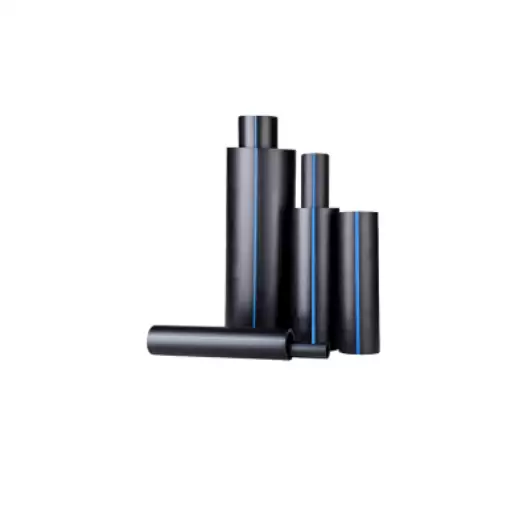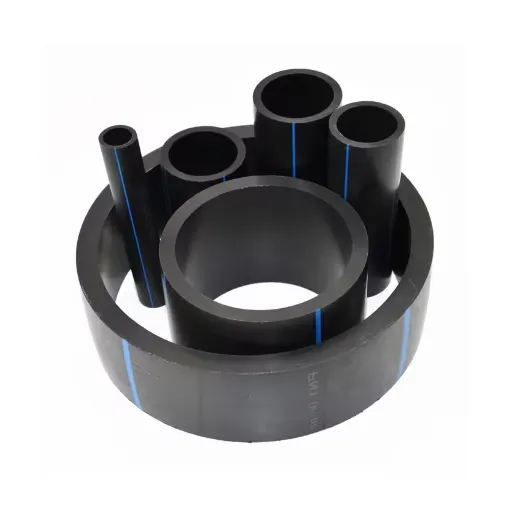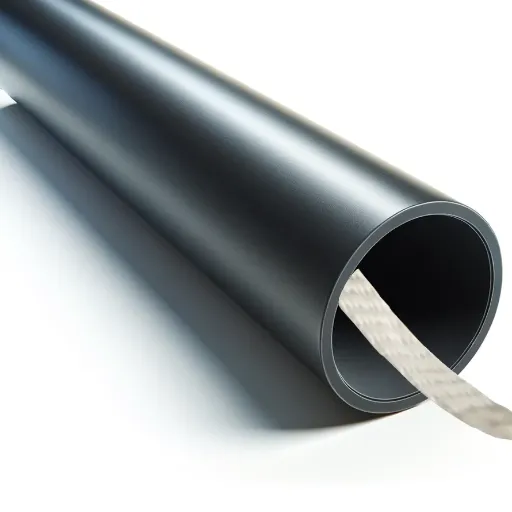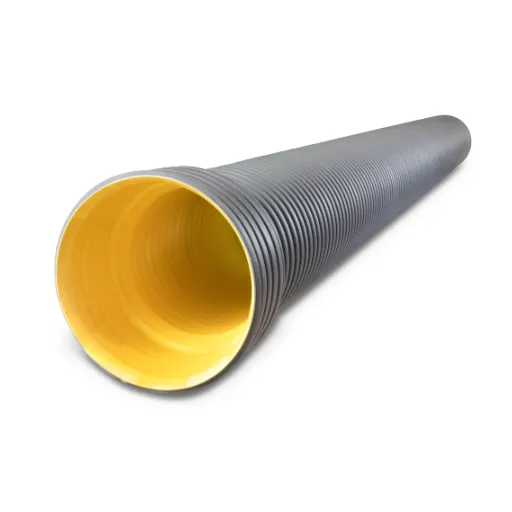High-Density Polyethylene (HDPE) pipes have revolutionized the piping industry with their unparalleled versatility, durability, and performance. Among the various sizes available, 16 HDPE pipe stands out as a critical component in countless applications, including water supply systems, gas pipelines, and industrial processes. But what makes this specific pipe so reliable and widely used? This article dives deep into the technical aspects, advantages, and applications of 16 HDPE pipe, offering a comprehensive guide to help you understand its importance. Whether you are a contractor, engineer, or simply someone exploring modern piping solutions, this resource will equip you with essential knowledge to make informed decisions and fully appreciate the value of polyethylene pipes.
What is 16 HDPE Pipe and Why is it Important?
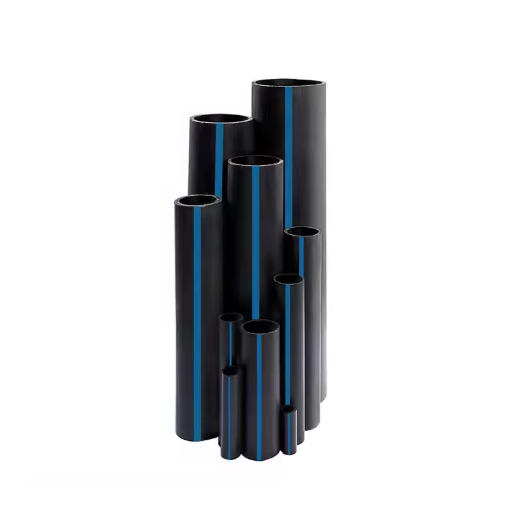
Introduction to HDPE Pipes
HDPE, or High-Density Polyethylene, pipes are a type of plastic piping commonly used for a variety of applications because of their tremendous strength, flexibility, and ability to resist both corrosion and chemicals. These pipes are made from thermoplastic polymer, which has a high tensile strength, impact resistance, and stretch, making it ideal for tough environments. The ‘16 HDPE pipe’ refers to pipes of a certain diameter and grade used throughout industries for water supply, sewage, and gas distribution, among other critical infrastructure systems.
One of the abilities that HDPE is known for is its unmatched capability for withstanding the effects of harsh chemical and weather-related phenomena. Unlike metal pipes, they ensure long service life while reducing maintenance costs because HDPE does not corrode. Its flexible nature allows it to endure ground movement, earthquakes, and shifting soil, without cracking or breaking. These qualities make the pipe widely adopted in regions with difficult environmental conditions, further solidifying its reputation for reliability and efficiency.
In addition, transporting and installing modern HDPE pipes is easier because they are lighter than other materials. They are typically welded together with heat fusion, facilitating system integrity through additional strength by creating leak-proof connections. Because HDPE is recyclable, it is environmentally safe and provides modern piping solutions. These facts outline why the 16 HDPE pipe is essential in developing engineering projects globally.
Benefits of Using 16 HDPE Pipe
The advantages of using 16-inch HDPE pipe are numerous, making it a preferred option for a variety of engineering projects. First, the reliability of the pipes is critical. HDPE material has a significant level of durability to corrosion, abrasions, and chemical attacks, ensuring that the piping system has a long-term warranty even in harsh and extreme environments. It is also economical because lower maintenance needs provide greater reliability when the pipes are used against traditional alternatives.
In addition, another critical feature of 16 inch HDPE pipe is its low weight and flexibility which greatly facilitate transport and installation. The flexibility of the pipe allows it to adapt to different kinds of surfaces and reduces the chances of it breaking when pressure or stress is applied. This characteristic supports its appropriateness for trenchless methods of installation which reduces environmental disruption.
Furthermore, the supporting components are environmentally friendly, which enhances the flexibility and adaptability of the systems. Heat fusion joints the pipe and fittings, ensuring no leaks occur through the connection, which increases reliability and the sustainability factors increase. This makes 16-inch HDPE pipe economically viable while providing the needed cost-effective solution to the modern civil infrastructural utility projects.
Common Applications of HDPE in Industries
High-density polyethylene (HDPE) is highly common in various industries owing to its exceptional durability, flexibility, and resistance to chemicals. Given below are the most significant uses of HDPE in industrial fields:
- Water and Sewage Systems: HDPE pipes are the material of choice for water supply lines, wastewater systems, and sewerage networks. Its corrosion resistance and high flexibility ensures prolonged usage even for systems under pressure or in contact with harsh chemicals. These characteristics makes HDPE best suited for municipal as well as residential water management projects.
- Gas Distribution: HDPE is often utilized in pipelines in gas distribution because of their leak proof nature and ability to withstand severe stress and shifting ground. Its light weight structure makes its transport and installation easier and thus, lowers infrastructure expenditures.
- Agricultural Irrigation Systems: Because of enduring environmental conditions and adaptability, HDPE is widely used in drip and blanket sprinkler systems. It ensures water delivery as well as providing withstand to UV radiation, making these assist in modern agricultural practices emphasizing sustainable water usage.
Apart from these core uses, HDPE is also used in industrial tank linings, cable ducting, and chemical transport systems. Its flexibility is essential in aiding the productivity and durability of many industries around the world.
How to Choose the Right HDPE Pipe Size for Your Project?
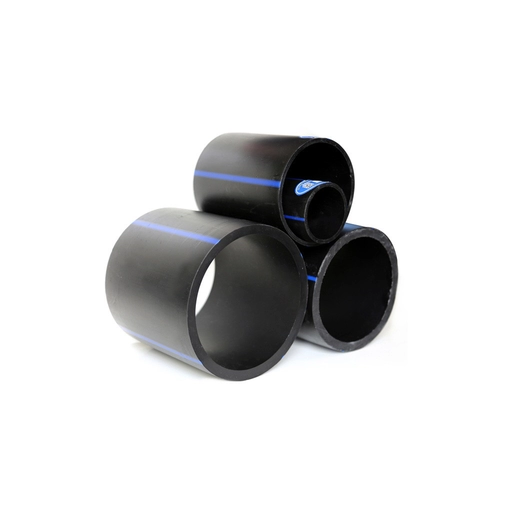
Understanding the HDPE Pipe Size Chart
The HDPE pipe size chart is a critical guide when it comes to selecting the right pipes for any particular use case. Provided underneath is a simplified illustration showing frequently used HDPE pipes along with their main specifications:
|
Pipe Size (inches) |
Outer Diameter (OD) |
Wall Thickness (SDR 11) |
Wall Thickness (SDR 17) |
Max Operating Pressure (psi) |
|---|---|---|---|---|
|
1 |
1.315 |
0.119 |
0.077 |
160 |
|
2 |
2.375 |
0.216 |
0.140 |
160 |
|
4 |
4.500 |
0.409 |
0.265 |
160 |
|
6 |
6.625 |
0.602 |
0.389 |
160 |
|
8 |
8.625 |
0.784 |
0.507 |
160 |
|
10 |
10.750 |
0.977 |
0.632 |
160 |
|
12 |
12.750 |
1.159 |
0.750 |
160 |
|
14 |
14.000 |
1.273 |
0.833 |
160 |
|
16 |
16.000 |
1.455 |
0.947 |
160 |
|
18 |
18.000 |
1.636 |
1.062 |
160 |
This table captures the fundamental measurements and operational indicators giving insight into the outer diameter (OD), wall thicknesses unders standard dimension ratios (SDR 11 and SDR 17), as well as maximum allowe operating pressure. Choosing the right HDPE pipe size for your project ensures the best performance and durability of the piping system while meeting legal requirements.
Factors Affecting Pipe Sizes and Selection
Choosing the correct pipe size for an application requires a comprehensive assessment for optimal operational efficiency alongside system reliability and regulatory compliance. We highlight the following considerations:
- Required plumbing flow rates with associated Units: Required flow rates, usually expressed in GPM (gallons per minute) or L/S (liters per second), greatly impact the bore size of pipes. To reduce friction losses, greater diameters are required to accommodate higher flow rates.
- Strength of pipe in consideration alongside the set pressure rating: Aligned with system’s maximum operating pressure, the pipe’s pressure rating is based on the material strength and wall thickness of the pipe. For example, HDPE pipes come in varying standard dimension ratios (SDRs). Pipes with lower SDR values denote thicker walls which indicate higher pressure capacities.
- Pipe fittings selection with regard to temperature range considerations: Operating temperature of the system also influences the material performance. Some materials like HDPE have their pressure rating lowered in elevated temperatures which forces changes in pipe selection.
- Reactions alongside material resistance: The medium being transported needs to be compatible with the material of the pipe to avoid failure or degradation. HDPE is ideal for a large range of applications due to its excellent resistance to corrosive substances.
- Friction Losses: Head loss that comes from friction flow decreases due to the internal surface roughness of the pipe. This loss must be mitigated for maximum energy saving and delivering the required energy fluid over long distances.
- Installation Work Conditions: Set of outside influences like external loads, burial depth, and soil conditions play a role in the structural integrity of the pipe. For example, heavily trafficked or seismic areas warrant the use of more robust materials to withstand the additional stress.
Designers and engineers are able to make the appropriate and most efficient selection of components which are tailored specifically to the technical and operational requirements of the project by combining these considerations with the newest tools of data analytics and research in the industry.
Exploring the Specifications of 16 Polyethylene Pipe
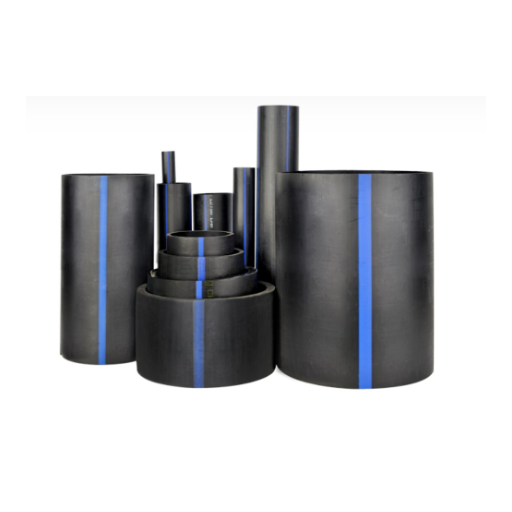
Key Specifications of 16 HDPE Pipe
The 16-inch High-Density Polyethylene (HDPE) pipe is carefully designed for various functions, such as water supply, industrial fluid transport, and wastewater management, for maximum durability, safety, and performance. Below are the critical specifications and features associated with this pipe:
- Material Composition: A composite of PE4710 resin, this pipe is designed to hold up under extreme conditions because of its height durability and chemical resistance. This material composition also ensures no corrosion, scaling or internal buildups will occur.
- Pressure Rating: Default or Extreme Pressure Straight Channels SDR 11, 13.5, or 21 are widely expressed in standard dimension ratios (SDR) but can also be found in 21 or regionally available 11 switchable mid Swiss Standard Solo. Rotating Selection Open Piston Pumps convey 100 psi to 200 psi in peak pressure ratings based on selected SDR.
- Weight and Handling: Compared to Steel, concrete or other traditional piping materials 16 inch hdpe pipe also has SDR 11 pipes are 37.0 mm mildrange about the mesurements of 406.4mm, which means its walls are 16 inches in diameter and so is the external circumference making its construction lightweight making the transportation and heleing much easier.
- Thermal Expansion: It is highly adaptable for use in various climates since HDPE has low thermal conductance and expands greatly under heat.
- Joining Methods: These pipes have 16 inch diameters and HDPE SDR 11 pipes around 406.4 mm which means butt fusion, and electro fusion easily adhdition making these joints resistant to leaks.
Also, 16-inch HDPE pipes observe regulations like ASTM D3035, ASTM F714, and AWWA C901/C906, confirming that these pipes meet the standards of quality for pressure piping systems. Ongoing improvements like better resin formulation and pipe production methods strengthen and increase the flexibility of HDPE pipes, making them ideal for modern infrastructure projects.
Importance of Pressure Ratings in HDPE Pipes
The pressure rating of HDPE (High Density Polyethylene) pipes is one of the most important factors that affect their accuracy and reliability during use. Each HDPE pipe has a pressure rating, also known as “Pressure Class(PC)” or “Standard Dimension Ratio(SDR),” which indicates the maximum internal pressure it can sustain for long periods under normal conditions. Choosing the right pressure rating is vital to avoid pipe deformation, failure, and burst, especially in high-pressure systems like water distribution networks, industrial pipelines, and irrigation systems.
The most common rating these pipes are given is based on the SDR system, meaning the tape-thickest walls and pipe diameters are the main factors influencing the rating. An example would be an SDR 11 pipe having a higher pressure rating in comparison to an SDR 17 pipe because the former has thicker walls.
The pipe’s pressure rating must be in conjunction with register operational pressures and likely surges from pump starts, valve closures, or water hammer effects. Moreover, temperature changes may impact the pressure performance of the pipe. In particular, higher temperatures might reduce effective pressure rating and strain performance. During the design stage, advanced tools like finite element analysis (FEA) and computational modeling offer ideal pipe selection and long-term stress predictions for specific environments.
The pressure rating improvements with the invention of PE-100 and PE-4710 grades along with higher resistance to stress cracking and increased toughness propel modern advances. These advancements allow designers to optimize pipe diameter and wall thickness to cut material expenses without losing structural integrity. Striking the right balance of pressure rating selection and resin technology mastery vastly improves the safety and efficiency of demanding applications’ pipeline systems.
What are the Methods for Installing 16 HDPE Pipe?
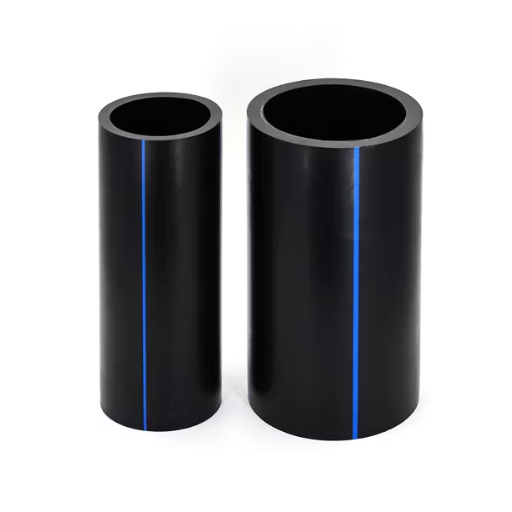
Overview of Butt Fusion Method
The butt fusion method is a commonly used procedure for joining together HDPE pipes, especially those with a diameter of 16 inches, this method follows a specific operational and structural protocol. In this method, the pipe ends are properly aligned and brought to their specific heating zones (between 400-450 degrees Fahrenheit), which is influenced by the type of resin used as well as the specifications of the pipe. After heating, the pipe ends will be in a molten state and will then be put under controlled pressure, this will provide a strong and uniform joint that is as strong as the HDPE pipe.
Surface preparation, alignment, heating, joining, and cooling are critical steps of the butt fusion method. These steps must be followed efficiently; otherwise, the weld created will not be strong. If done correctly, the butt fusion method will yield joints that are impervious to leaks, while capable of tolerating both high internal and external pressures for prolonged periods.
Modern developments in fusion equipment provide a higher degree of automation and data capturing, which reduces the probability of human error and improves adherence to quality assurance standards. Coupled with high-performance resins, this is changing the butt fusion method’s cost effectiveness and overall value when it comes to installing large-diameter pipelines in the oil and gas, water distribution, and industrial systems, making them easier to adopt.
Using Black HDPE for Water Systems
The remarkable properties and versatility of materials have made black high-density polyethylene (HDPE) one of the best-suited options to be incorporated in various water systems. When compared to other colored types of HDPE, black HDPE provides an unmatched enduring strength to ultraviolet (UV) rays and chemical exposure, therefore increasing the lifespan of water systems that are either externally exposed or buried. Moreover, its superior strength-to-weight ratio makes black HDPE reliable for use under operational pressures, minimizing risks of leakage or structural failure during prolonged usage.
Scientific research shows that systems made out of HDPE outperform older ducts made out of ductile iron and PVC in terms of corrosion resistance. Besides these benefits, the use of advanced fusion technologies such as butt fusion to join black HDPE pipes relieves worries from leaks throughout the entire pipeline, allowing for immense hydraulic pressures to be withstood. This particular feature leads to massive efficiency improvements in system maintenance, further leading to ameliorated water quality by eliminating undue contamination risks posed by degrading materials.
Also, black HDPE aids in sustainable infrastructure development as it can be recycled and has a lower environmental impact during its production and transportation. Its comparatively light weight further reduces installation costs, allowing for quick deployment in both urban and rural water systems. These factors prove the efficacy of black HDPE as a material for building strong, reliable, and affordable water systems.
Tips for Successful Pipe Connection
For a safe and enduring pipe connection, fulfilling a set of meticulous and systematic procedures is a must:
- Proper Pipe Preparation: Clean the dirt, oil, and other contaminants from the pipe ends and fittings. Cleaning ensures the connection is strong. Cut the ends with a pipe cutter, remove all the burrs or irregularities on the edges, and ensure the ends cut straight. This can greatly affect sealing efficiency and alignment.
- Choose materials that are compatible: Ensure chemical and thermal expansion incompatibilities will not arise. For instance, ensure to use black HDPE pipes along with sturdy compatible withstand fittings designed to endure similar pressure ratings and durability conditions.
- Use suitable jointing practices: Follow the proven jointing methods dedicated to specific materials, be it heat fusion, mechanical fittings, or electro fusion. Each of these methods guarantees the pipe can sustain extreme pressure. Also, ensure to stick to the guide provided by the manufacturer to allow proper heating and cooling cycles alongside fusion.
- Quality Assurance and Leak Testing: Following the assembly and securing of the pipe connection, conduct a hydrostatic test or pneumatic pressure test by industry standards. These tests confirm the joints’ strength and leak-tightness capability under simulated operational conditions.
- Flexibility Monitoring: Include flexible joints and expansion loops in regions with pipe temperature changes. This reduces the risk of failure due to material expansion or contraction, especially in outdoor installations.
Following these thorough procedures and regular maintenance checks will greatly improve the overall performance, reliability, and life of the piping system.
The Price and Cost Considerations of 16 HDPE Pipe
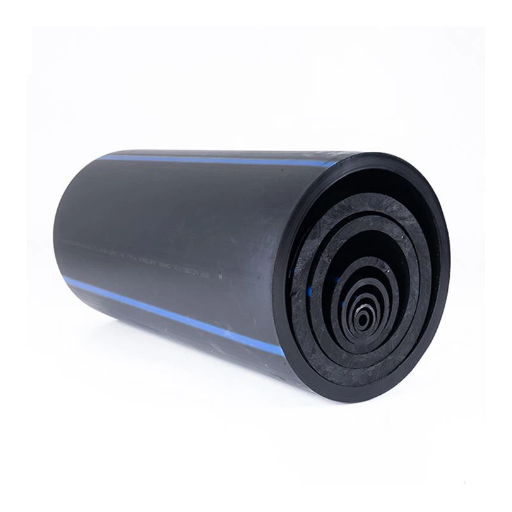
Factors Influencing HDPE Pipe Price
A HDPE pipe’s cost is determined by material, operational, manufacturing, and market factors. Knowing these factors helps in developing a more thoughtful cost and purchasing strategy.
- Raw Materials: The most important part of an HDPE pipe is the polyethylene resin which is the base of its constituent parts. As recent tendencies show, there is a correlation between crude oil prices and resin costs, because resin is made from gasoline by-products.
- Pipe Width and SDR Value (Standard Dimensional Ratio): HDPE pipes come in various diameters and pressure ratings (classified by SDR or Standard Dimension Ratio). Increased diameter and pressure ratings increase material consumption and the intricacy of the cost designs. For instance, the price of SDR 11 pipes which are meant for high pressure use will always be more expensive than SDR 17 pipes which are of the same diameter.
- Transportation and Logistics: The bulky dimensions of HDPE pipes increase their transportation costs. Shipping distance, fuel prices, and the cost for special equipment needed for loading and unloading all affect the final price.
- Market Demand and Supply: The demand for HDPE pipes is increasing across the globe, especially for municipal water systems, distributing natural gas, and in agriculture. This increased demand, when combined with complications in the supply chain or low production capacity, can increase costs.
- Customization and Value-Added Features: The production costs are increased by custom modifications such as outdoor UV-coated and pre-insulated piping. Custom modifications are usually meant for specific industries, like adding materials for advanced monitoring systems.
- Currency Exchange Rates: For some regions that depend on imported HDPE pipes or materials, currency shifts become the most essential factor impacting costs. The depreciation of the local currency in comparison to the US dollar means greater expense for a lot of imported goods.
Considering these various elements enables stakeholders to alleviate the budget risks and plan out the purchasing needs adequately. Incorporating precise market analysis as well as supplier contract discussions guarantees high standards of quality and performance without blowing out the expenditure limit.
Comparing Cost with Other Pipe Materials
The price of maintenance, needed upkeep, and material attributes all play an important role alongside installation prerequisites when analyzing the expenses related to various types of piping. For example, due to the low costs associated with material, the light weight, and easy handling of PVC pipes, they are often used in commercial and residential buildings. Despite these advantages, their durability in super-hot or cold temperatures makes it hard for them to be used everywhere.
Extreme corrosion-resistant materials such as stainless steel or copper come at a hefty price, but they can endure high levels of force and pressure, providing value in industrial contexts, high-temperature processes, and in systems under immense pressure. Furthermore, HDPE pipes sit comfortably in the middle ground due to their average price, coming with high chemical resistance, flexibility, and impact strength, which makes them sought-after in water transmission and utility systems.
Although primary material cost is arguably important, examining the total cost of ownership—including installation, ease of repairs, environmental considerations, and maintenance—strategically reveals the most cost effective option customized to the specific project needs.
Budgeting for HDPE Pipe Projects
Effective budgets for HDPE (High-Density Polyethylene) pipe projects must consider all layers of overhead and direct costs. Though the raw material cost of HDPE pipes is fairly competitive, planners need to account for additional costs such as transportation, installation, and system maintenance over time. Their high corrosion resistance often makes HDPE pipes a preferred choice, which means they are likely to need fewer frequent repairs over their lifespan. This leads to a lower lifecycle cost when compared to many other materials, such as PVC or ductile iron.
Moreover, the adaptability of the environment to the HDPE pipes allows for the use of innovative trenchless installation technologies such as Horizontal Directional Drilling (HDD,) which can further drive up costs. While these methods may be more expensive initially, they often reduce labor hours and disruption to important infrastructure in sensitive urban areas. For example, HDD installation can cut restoration costs by as much as 50% when compared to traditional open-trench methods, depending on how complex the project is.
Additionally, the local construction code along with the specifications of the materials used have an impact on the expenses incurred by the project. Adhering to AWWA C906 or ISO 4427 standards ensures that an appropriate level of strength and safety is incorporated into the HDPE pipes, which may require more expensive materials or extensive independent evaluations, though meet the safety requirements. These costs should be included in the pre-project costing to prevent financial losses during the different phases of the project.
Using intricate cost models, along with the consideration of total cost of ownership, provides the most realistic projection of a budget watermark for the HDPE projects. Furthermore, the integration of dynamic market information on the pricing of the materials and labor, along with the region’s climate conditions, results in an all-encompassing approach that meets the objectives of the project while also being realistic.
References
Frequently Asked Questions (FAQ)
Q: What is a 16 HDPE pipe, and what is it used for?
A: A 16 HDPE pipe is a type of high-density polyethylene pipe commonly used for various applications such as potable water systems, irrigation, and mining. This product is highly durable and resistant to corrosion, making it ideal for long-term use in different environments.
Q: What does IPS mean in the context of HDPE pipes?
A: IPS stands for Iron Pipe Size, which is a standardized system for sizing pipes. In the context of HDPE pipes, it refers to the outer diameter of the pipe, ensuring compatibility with existing iron pipe systems.
Q: What are the advantages of using pipe PE4710 for irrigation systems?
A: Pipe PE4710 is highly recommended for irrigation systems due to its superior strength and flexibility. It can withstand high pressure and harsh environmental conditions, making it ideal for transferring water over long distances while maintaining the integrity of the irrigation line.
Q: How long is a standard 16 HDPE pipe?
A: Standard lengths for 16 HDPE pipes are typically 40 ft, but they can also be custom-cut to meet specific project requirements. This flexibility in length is beneficial for a variety of applications.
Q: What is the significance of SDR 11 in HDPE pipes?
A: SDR stands for Standard Dimension Ratio, which is a measure of the pipe’s wall thickness relative to its diameter. An SDR 11 pipe has a thicker wall, allowing for higher pressure ratings and making it suitable for demanding applications.
Q: Can HDPE pipes be used in mining operations?
A: Yes, HDPE pipes are commonly used in mining for their durability and resistance to chemicals. They are ideal for transferring slurry and other materials due to their high allowable pressure and robust construction.
Q: How are HDPE pipes fitted together?
A: HDPE pipes can be fitted together using various methods such as butt fusion, electrofusion, and mechanical fittings. These methods ensure a secure and leak-proof connection, suitable for high-pressure applications.
Q: What are the typical applications of 16 HDPE pipes in industrial settings?
A: In industrial settings, 16 HDPE pipes are used for a wide range of applications, including water and gas distribution, chemical processing, and wastewater transfer. Their versatility and resilience make them a preferred choice for many industrial operations.



